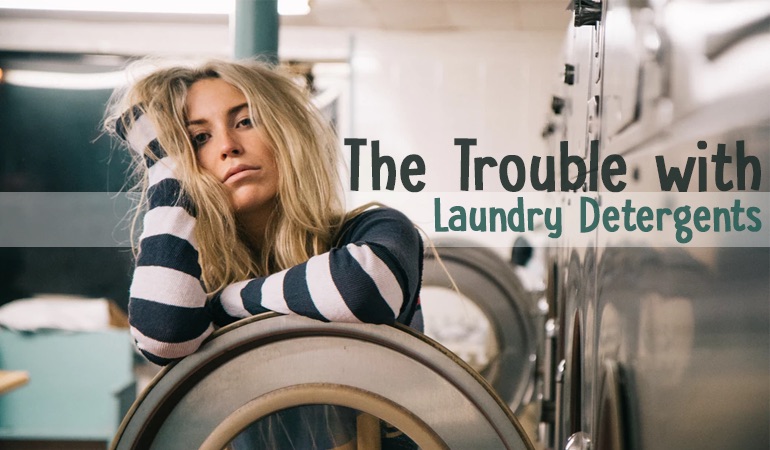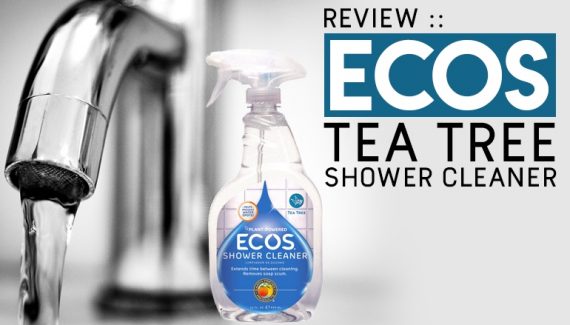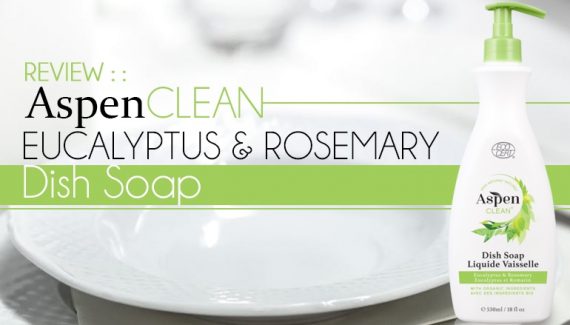Safe Household Cleaning is reader-supported. All reviews are independent and any products reviewed are purchased by the site owner. To help fund this model, some of the links on the site are affiliate links. If you decide to make a purchase from one of these links, this site will receive some commission. At no cost to you. It helps keeps this place running. Learn more
No Obligation to Label
There is a significant (and intentional) lack of clarity surrounding the ingredients found in laundry detergents. If you have a known allergy to a fragrance or surfactant, as examples, its absence from the ingredient label doesn’t mean it’s not in the product. Detergent manufacturers are concerned about the piracy of their formulations, irrespective of consumer welfare. Labelling requirements vary globally and are always complex. An overview of EU and US regulations is described below.
European Union (including the United Kingdom)
Under Regulation (EC) ‘648/2004’, the European Parliament enforced more stringent labeling requirements on detergent manufacturers [1]. This included the requirement to list ingredients over 0.2% concentration but importantly doesn’t force manufacturers to list specific chemicals, just the categories (e.g. ‘anionic surfactants’ or ‘enzymes’). If a detergent contains a fragrance this must be listed, even below 0.2%, but as ‘fragrance’ or ‘perfume’ and not as the chemical ingredient.
A datasheet containing more information must be available for the general-public on the manufacturers website, but this is often difficult to find and lacking essential detail. A more detailed datasheet must be provided to medical professionals on request, but this cannot then legally be passed on to any other individual. Enforcement of the legislation varies by member state, but in the UK breaches are a criminal offence, punishable with imprisonment or unlimited fine [2].
United States
Detergent labeling in the EU has ‘improved’ over recent years, but the issue is considerably worse in the US, where the burden of transparency and safety is placed on manufacturers [3]. A number of federal agencies are responsible for the labeling of ‘hazardous substances’ (e.g. Environmental Protection Agency, Consumer Product Safety Commission), but these mandate that only ingredients ‘known’ to be harmful are listed on detergent labels. If an ingredient is not ‘known’ to be harmful to the under-resourced EPA, it does not need to be listed.
[Note: the risk of piracy is largely overstated, as modern analytical chemistry allows any manufacturer with the budget to easily determine the composition of a rival’s product]
Volatile Organic Compounds (VOCs)
Most household consumer products emit volatile organic compounds (VOCs), polluting the air around us, these include: air fresheners, laundry detergents, fabric softeners, disinfectants, and deodorants [4]. Manufacturers are not required to list these ingredients on labels, and there is growing concern about the possible detrimental effects on human health.
A study published in 2015 by one of the leading researchers on VOCs – Dr. Anne Steinemann, Professor of Civil Engineering at the University of Melbourne – reviewed 37 household products and found 156 unique VOCs, 42 of which the EPA deem toxic, with fewer than 3% listed on ingredient labels or manufacturer datasheets [5]. In the study, ‘green’ or ‘organic’ products fared no better than others, highlighting the prevalence of misleading information provided to consumers.
- 1,4-Dioxane (1,4-Diethylene Oxide)
A well-documented example of a VOC is 1,4-Dioxane, a solvent that has been subject to increasing scrutiny in recent years. Manufacturers do not always directly add 1,4-Dioxane to their products, although also do not necessarily go out of their way to remove it. It is used as a solvent to produce many of the other ingredients, making its way into the final detergent in small quantities.
The concern surrounding 1,4-Dioxane is that it is readily absorbed both orally and by inhalation, is a known irritant, and causes liver tumors in animal studies [6]. There is very little evidence for its effects on human health, but both the EU and US consider the solvent a probable carcinogen. The FDA do not set a maximum exposure limit for 1,4-Dioxane, but the EU recommend a maximum concentration of 10 parts per million (ppm) in pharmaceutical products.
Popular detergent brands have been shown to contain anywhere from 10 to 50ppm 1,4-Dioxane, not being as strictly regulated as pharmaceuticals. In the study by Dr. Steinemann described above, five of the 37 products contained 1,4-Dioxane [5].
- Fragrances
Fragrances in laundry detergents and other household products are among the worst VOCs, because they are designed to pollute the air, with the aim of improving the smell of a product. There are around 3,000 known fragrance ingredients, which emit pollutants including limonene and α-pinene [7]. These ‘primary pollutants’ then further react with the air to form the ‘secondary pollutants’, such as formaldehyde and acetaldehyde. Fragranced products have been reported to cause a range of adverse effects, including: migraines, breathing difficulties, and skin conditions [8].
Known to be Harmful
The prevalence of VOCs in household products show that exposure to hazardous pollutants is not limited to the workplace, but many of the other ingredients in laundry detergents can also be harmful, including: surfactants, alcohols, preservatives (e.g. formaldehyde, sodium benzoate), enzymes and phthalates. The role of each of these ingredients in the harmful effects of detergents is not fully understood. In addition, the lack of regulation makes trying to avoid specific ingredients essentially impossible.
- Asthma
Many of the ingredients found in laundry detergents are known to exacerbate asthma, including: chlorine, ammonia, fragrances, and enzymes [9]. In California, it has been reported that 11% of work-related asthma attacks are due to cleaning products, with 80% of these individuals not directly involved in cleaning [10]. Even in those without asthma, cleaning products are associated with acute bronchitis, and other respiratory conditions, due to the inhalation of irritant compounds.
- Skin conditions (e.g. contact dermatitis)
Numerous studies have been conducted into the risk of laundry detergents causing or exacerbating skin conditions. The risk can appear to be low, because detergents are washed off, but many of the irritant ingredients – such as preservatives and fragrances – are retained after washing [11]. The prevalence of contact dermatitis after exposure to detergents is difficult to establish, but the North American Contact Dermatitis Group found a prevalence of 0.7% from a study of 738 participants [12]. Reported skin conditions after exposure to detergents include:
- Skin sensitization
- Napkin dermatitis
- Granular parakeratosis
- Burns
It is well-documented that laundry detergents can cause skin irritation, but the risk of severe burns is less extensively researched. Doctors at The Ohio State University Medical Center published a case report highlighting a 10-month-old who experienced 2% partial thickness burns after a laundry detergent ‘pod’ (or ‘capsule’) split, and was not sufficiently decontaminated at the time [13]. Cases of major esophageal and respiratory burns from detergents, requiring extensive inpatient treatment, have also been reported.
- Poisoning
In both the EU and US, detergent manufacturers are legally required to identify their products as ‘hazardous’, ‘corrosive’, or ‘irritant’ – depending on the specific ingredients. A study published in 2016 estimated that over 35,000 patients presented to emergency departments in the United States with laundry detergent poisoning or related-accidents between 2012 and 2014 [14]. Most of these cases were children under five, and the authors noted that both manufacturers and care givers had a role to play in reducing incidents.
Environmental Effects
The toxic and harmful ingredients found in laundry detergents make them a considerable source of household environmental pollution (in addition to the environmental cost of manufacturing, packaging, transportation, and disposal). Detergents are known to: contaminate and acidify groundwater; increase algae in aquatic areas reducing the available oxygen (known as ‘eutrophication’); and disrupt the endocrine systems of aquatic animals [15].
The effects of detergents on the environment are complex and difficult to determine. Since the 1970s, less environmentally damaging detergents have become more popular. Phosphates in detergents were once hugely polluting, but are now absent from essentially all cleaning products. In 2004 the European Union mandated that all detergents must be biodegradable to help prevent further environmental damage [16].
Good News – What’s Being Done?
The disclosure of ingredients in detergents is one of the key issues preventing greater awareness and avoidance of the most harmful substances. Following progress made in the EU, several US states such as California and New York, are aiming to force detergent manufacturers to publish ingredient lists online, including [17]:
- Chemical ingredients and content by weight
- Identify ingredients known or thought to be harmful
- Publish information on the effects of the ingredients on human health
This would go significantly further than legislation in the EU, but it is unclear how much detail manufacturers are willing to disclose without federal enforcement. The EPA offers a voluntary program, ‘Safer Choice’, in which approval is only granted to products that use ingredients deemed safe to human health and the environment – including preservatives and fragrances [18].
Summary
Laundry detergents contain a range of ingredients known to be harmful to human health and the environment, but manufacturers are not legally required to list these on ingredient labels. Both the EU and US lack strict labelling requirements for detergent manufacturers, and there is concern about the prevalence of VOCs including 1,4-Dioxane and fragrances in detergents.
The effects of detergents on human health and the environment are not fully understood, but documented adverse effects include: asthma, skin conditions, burns, and poisoning. Several US states are pressing manufacturers to increase the amount of information they disclose, with the aim of increasing consumer awareness and protection.
References
- The European Parliament and The Council of The European Union. Regulation (EC) No 648/2004 [Internet]. March 2004. [Accessed: 2/12/17] www.ec.europa.eu
- Health and Safety Executive. Detergents Guidance Document [Internet]. [Accessed: 2/12/17] www.hse.gov.uk
- Steinemann, A., & Walsh, N. Environmental laws and exposure analysis. 2007. Exposure Analysis. CRC Press.
- Nazaroff, W. W., & Weschler, C. J. Cleaning products and air fresheners: exposure to primary and secondary air pollutants. 2004. Atmospheric Environment. 38(18), 2841-2865.
- Steinemann, A. Volatile emissions from common consumer products. 2015. Air Quality, Atmosphere & Health. 8(3), 273-281.
- Scientific Committee on Consumer Safety. The Report of the ICCR Working Group: Considerations on Acceptable Trace Level of 1,4-Dioxane in Cosmetic Products. December 2015. [Accessed: 2/12/17] www.ec.europa.eu
- Nardelli, A., Drieghe, J., Claes, L., Boey, L., & Goossens, A. Fragrance allergens in ‘specific’cosmetic products. 2011. Contact Dermatitis. 64(4), 212-219.
- Bridges, B. Fragrance: emerging health and environmental concerns. 2002. Flavour and Fragrance Journal. 17(5), 361-371.
- Dodson, R. E., Nishioka, M., Standley, L. J., Perovich, L. J., Brody, J. G., & Rudel, R. A. Endocrine disruptors and asthma-associated chemicals in consumer products. 2012. Environmental Health Perspectives. 120(7), 935.
- California Department of Public Health. Healthy Cleaning and Asthma-Safer Schools. October 2014. [Accessed: 2/12/17] www.cdph.ca.gov
- Nedorost, S., Kessler, M., & McCormick, T. Allergens retained in clothing. 2007. Dermatitis. 18(4), 212-214.
- Belsito, D. V., Fransway, A. F., Fowler, J. F., Sherertz, E. F., Maibach, H. I., Mark, J. G., & Nethercott, J. R. Allergic contact dermatitis to detergents: a multicenter study to assess prevalence. 2002. Journal of the American Academy of Dermatolog. 46(2), 200-206.
- Russell, J. L., Wiles, D. A., Kenney, B., & Spiller, H. A. Significant chemical burns associated with dermal exposure to laundry pod detergent. 2014. Journal of Medical Toxicology. 10(3), 292-294.
- Swain, T. A., McGwin, G., & Griffin, R. Laundry pod and non-pod detergent related emergency department visits occurring in children in the USA. 2016. Injury Prevention. 22(6), 396-399.
- Khan, F. A., & Ansari, A. A. Eutrophication: an ecological vision. 2005. The Botanical Review. 71(4), 449-482.
- Ott, C., & Rechberger, H. The European phosphorus balance. 2012. Resources, Conservation and Recycling. 60, 159-172.
- Birkey, R. N., Guidry, R. P., Islam, M. A., & Patten, D. M. Mandated social disclosure: An analysis of the response to the California Transparency in Supply Chains Act of 2010. 2016. Journal of Business Ethics, 1-15.
- Lavoie, E. T., Heine, L. G., Holder, H., Rossi, M. S., Lee, R. E., Connor, E. A., & Davies, C. L. Chemical alternatives assessment: enabling substitution to safer chemicals. 2010. Environmental Science & Technology.



No Responses Yet